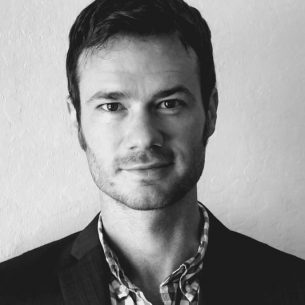Advocates around the world are using a USC Price professor’s research to make their cities healthier and more sustainable.
Assistant Professor of Urban Planning and Spatial Analysis Geoff Boeing is part of an international team of researchers who recently published a series in The Lancet Global Health on how to create healthy and sustainable cities – and how research can inform policies to improve public health.
The series couldn’t be timelier: Much of the urban growth over the next 30 years is predicted to occur in low-income and middle-income countries, which face harsher consequences of climate change and are disproportionately affected by health challenges including infectious diseases. Shortly after the series was published, The Lancet co-hosted two global launch events with the researchers, and over a dozen local events were held around the world with city leaders, researchers and health and sustainability advocates.
The Price Office of Communication recently sat down with Boeing to discuss The Lancet Global Health series, the “1,000 Cities Challenge” and what happens next.
Q: This research follows an earlier series of papers in The Lancet on healthy cities. Can you talk a little bit about the prior research and what’s new?
Back in 2016, The Lancet published a series looking at urban design, transport and health in cities around the world. One of the big takeaways was that we need a better evidence base to support cities that are well-designed and have good transportation policies and urban planning. But that evidence base is often hard to come by.
At this point, we know what healthy cities look like and how they’re performing for their citizenry. For example, we know cities in Europe tend to have better pedestrian accessibility, easier access to daily living needs and access to public open space than most American cities, which are characterized by sprawl, poor accessibility and car dependence.
But we also need better and more specific targets to hit. We have to put actual hard numbers on it to say, ‘If you do this, then we see this kind of relationship with physical activity and health.’
Our research tries to better understand what those targets might look like in 25 cities. We assessed whether cities are moving in the right direction to improve population health and reduce the factors contributing to climate change. And we created tools so other cities throughout the world can replicate these goals.
Q: If you were to create a recipe for a healthy, sustainable city, what ingredients would you need?
There’s a lot of geographic diversity around the world, along with different cultures, customs and forms of political governance. So, there isn’t a one-size-fits-all. But there are some invariant principles about what makes human beings healthy, like having access to healthy food, healthy air and physical activity. Being safe and having access to shelter – that’s essential.
When it comes to access to public open space, are there places for you to get outdoors to move around, get exercise and play with your children? Can you satisfy daily living needs without just sitting behind the wheel of your automobile?
While we’re not able to capture all aspects of what makes a city healthy, we were able to look at some of those specific public health aspects of it.

Q: What’s an example of a city that’s meeting some of its residents’ needs, but not others?
In an American city like Phoenix, residents often have some source of food within a mile of their residences. But that’s because Phoenix is built on these super blocks of one square mile, with houses close enough to strip malls, with grocery stores and restaurants. You can walk to them, but it’s certainly not a pleasant walk.
That brings up an important aspect of urban design, which we can’t really capture in a study like this: The quality of the pedestrian environment. It’s an important piece of future research. For example, how wide is the sidewalk? Are there any street trees along that sidewalk to give you shade? Are there cars zooming by 12 inches away at 40 miles per hour, or are you protected as a pedestrian? Just because it’s only a half mile to get food doesn’t mean it’s the same walking experience as in another city.
Q: What are some of the solutions to make cities healthier and more sustainable? Are they expensive?
The biggest problem in America is that we make healthy cities, active travel and affordable housing illegal so much of the time. For example, apartments are banned in the vast majority of Los Angeles and only single-family homes are allowed. That makes it a lot harder to build smaller, more affordable housing units. We used to have much more walkable streets in Los Angeles, but we widened them in the middle of the 20th century, eliminating the street trees that shaded the sidewalks, so we could fit six driving lanes onto most of our arterial roads.
These are choices we made. And a lot of those are fairly easy to fix. It’s easier to build protected bike lanes than it is to build a new freeway. It’s easier to create bus-only lanes that carry more passengers than it is to widen the I-5 freeway through Orange County. These are fundamentally political choices, but a lot of them can be relatively inexpensive.
Q: I gather public transportation is a huge piece of the solution.
It plays a big role. But in most situations, train or bus trips start and end with a walking or biking trip. It’s the last mile problem and the solutions have to be useful. Often, cities will put bike lanes where it’s convenient to stick them, rather than thinking comprehensively about what a useful bicycling network looks like. Los Angeles is a poster child of that; we have these little scattered spurs and stubs of a bike lane for a block or two, and it just stops and disappears. It’s not a comprehensive network.
In a similar vein, cities build new light rail lines along disused freight tracks that go through industrial areas, or down the median of a freeway, because there’s some land available there or they’re able to use it without having to acquire a new right of way. In those cases, they’re not prioritizing that idea of access.
Q: Tell me about the launch events you held to discuss the results of the series. That’s a pretty unusual follow-on; how did it come about?
One of the central goals of our research is to make this work useful and usable by folks on the ground. We want to turn the data over to the mayor of a city and say, ‘Here’s how your city compares to its peers. Here’s where you could improve urban living for your citizens.’ The local launch events helped capitalize on that by bringing together those local stakeholders, along with some of the authors of the papers, to talk through the findings, how that city stacked up and what kind of policies they had in place.
We generated local scorecards for each city, which laid out some of the key facts and figures about that city and how it’s doing relative to the other places we looked at. The goal is for advocates to be able to bring those hard numbers as evidence to their city council and say, ‘We need safer walks to school; we need easier access to our daily living needs.’
In addition, we held a global launch with The Lancet to reach a wider audience and communicate that our software and data are open source and reproducible. We’ve invited anybody anywhere to use our tools. Once they generate the results and upload it to our website, we can build this into a broader database that benchmarks cities all around the world. Our goal is to expand to 1,000 cities.
That sounds ambitious. How are you getting that call out?
We have several dozen authors across all of these papers and everyone’s working to spread the word. We had a few hundred people attend the global launch. There’s a connection to a consortium of mayors operating in this sustainability space as well as to the United Nations with their sustainable development goals. That helped us frame a lot of our work around that global agenda of living within our means, with an eye toward a sustainable future in which we’re all healthier and more equitable.
Is there anything you want to add?
The open source, open data nature of this project really opens a lot of doors. For the first time, we’re able to do a lot of this analysis using open-source software and open data – meaning it’s all free and the work can be relatively low effort, where you don’t have to necessarily collect the primary data yourself.
The more that we can contribute all these things into open platforms like OpenStreetMap, the easier it is for everyone else to have access to it and to conduct citizen science or use the data for advocacy. So, aside from the urban planning and public health side of things, this is one of the big philosophical thrusts of our paper: We really need to lean into this idea of open science, open-source software, and open data for all.


